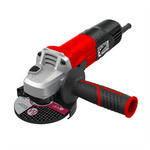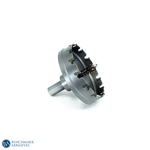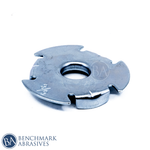
10 Safety Procedures In A Drilling Operation

Drills are the most commonly used and applied instruments in industrial or domestic settings. Using a drill, you may create holes of various diameters in various materials, such as cement, metal, and wooden surfaces. By adding attachments, you can use a drill for cutting, metal polishing, opening and closing screws, and sanding.
However, you should know how any instrument or device functions before operating it, especially regarding safety considerations. With some safety information and drill techniques, you can maintain your health and increase your cutting tools' lifespan.
If you have ever used a drill for a project or around the house, you are familiar with the fundamentals of using a drill. However, the following drill working advice will help you maintain the health of your equipment and yourself.
10 Safety Procedures In a Drilling Operation
Select The Proper Type Of Drill
Selecting the proper size, kind, and several drills and drill bits is the first step in successful drilling. Of course, the Ronix Tools Company can offer you a wide range of drills, such as Electric Corded Drills, Corded Impact Drills, Corded Impact wrenches, etc.
Remember To Wear Protective Clothing And Safety Gear
To drill safely, always wear safety goggles. Respiratory masks are advised to prevent breathing in drilling dust. Gloves are excellent tools and might be helpful if they are the correct size. Try to get gloves that are the proper size to shield your hands from harm.
Make Certain The Drill Chuck Is Sufficiently Tight
The drill operates smoothly and securely in the chuck before drilling begins. A loose chuck prevents the drill bit from turning. First, place the drill bit into the chuck before tightening the chuck. You should then tighten the chuck until a single click is heard. The drill bit is firmly in place when you hear the final click.
Tighten The Piece Of Work
Before drilling, tighten your workpiece with a clamp to prevent movement. Use both hands to grip the drill, and never hold the piece in your hand to prevent losing control of the drill. Know the types of drill bits.
Don't Press Down Too Hard On The Drill
The motor itself should handle the majority of the drilling effort. Too much pressure could cause the drill to slip or harm the engine. As a result, depending on the material you're working with, it's crucial to modify your drill speed and pressure. For instance, when working with wood drill bits, you can use high speed and pressure to create rough holes. However, straining too hard could raise your risk of tear-out. To lessen the splintering, go a bit lower and keep the bit as straight as you can when drilling a hole in wood.
When Drilling, Refrain From Donning Jewelry And Loose Clothing
When using drills, jewelry, scarves, and clothing with long, loose sleeves should be avoided. Drilling could grip and pull the hanging objects, creating a hazardous situation. Therefore, if you are drilling, roll up your sleeves if they are long and loose, and pull your thick hair back if it is flowing.
Label The Drilling Location
It is advisable to hammer a nail into the work area and mark it because the drill could slip on surfaces like metal, glass, etc. Then, use a smaller drill to make a hole. After that, use the primary drill bit to create a hole. You'll be able to drill straighter and cleaner as a result. To keep the drill from slipping while working on the tile, you can alternatively tape a sheet of paper to the desired point.
When Water Spills On The Drill, Turn It Off
Unplug your electric corded drill if water gets on it to prevent the risk of electric shocks or your equipment burning out. Then, dry it with a Ronix heat gun or a standard dryer. Please remove the battery from a rechargeable cordless drill driver and set it aside to dry.
Employ A Drill Base
The drill base serves as both a frame and a guide. When drilling a complex surface, you use a drill base. You will benefit significantly from a drill base if straight drilling is challenging.
Never hold or hang a cabled drill from its cable
Never carry or hold a corded drill while it is still attached to its cable; doing so could result in a short circuit or a wire breaking.
Additional Safety Tips
Following are some of the additional safety tips for optimal drilling operations:
-
Wear appropriate PPEs: Ensure to wear appropriate protective gear, including a face mask, face shield, helmet, high-visibility vests, etc., during drilling operations.
-
Regular maintenance of drilling tools: Ensure regular cleaning and remove any rust and contamination in drilling tools for efficient performance. This also increases the durability of the equipment. Also, sharpen the tools frequently for optimal cutting.
-
Applying the right drilling technique: Ensure to apply the right drilling technique, like applying even pressure and starting slow while drilling the workpiece. This prevents chipping and breakage of tools and materials.
That was all about the safety precautions you should take during drilling operations.



































































